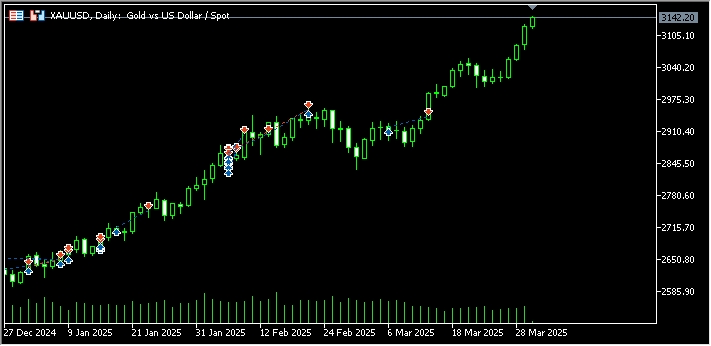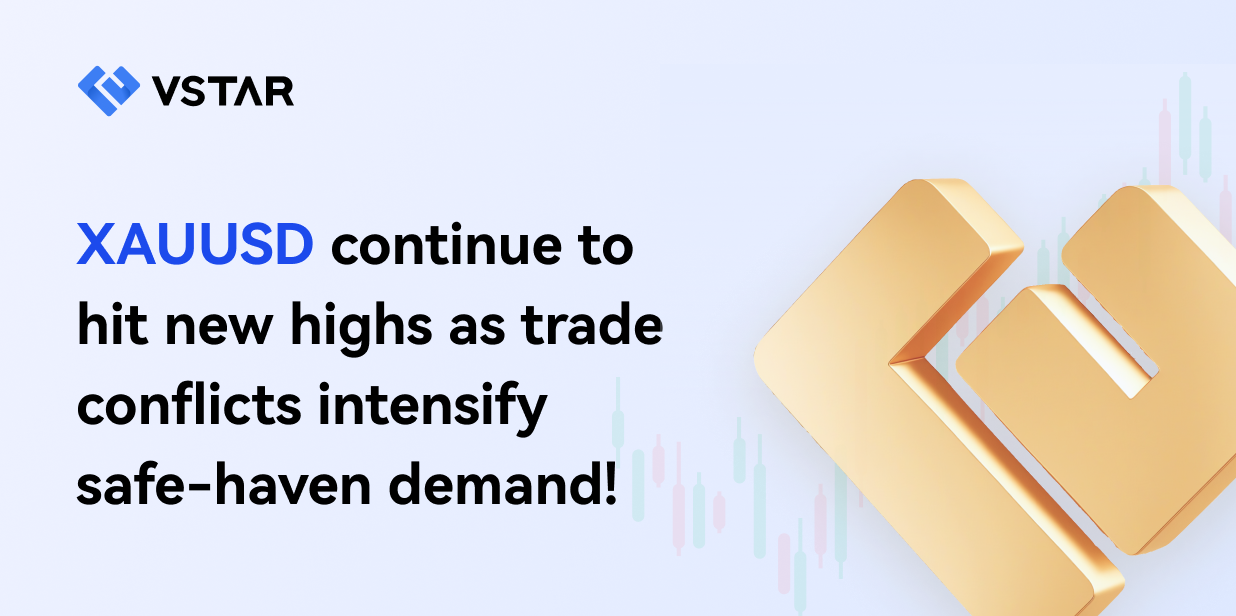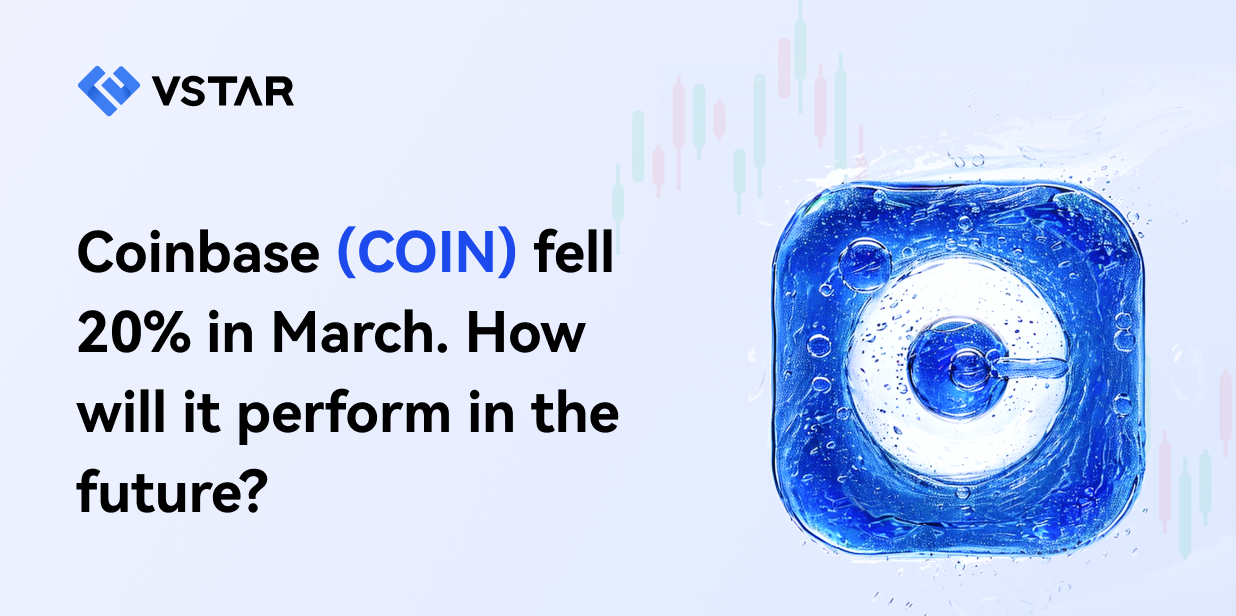Analysis of the reasons for the continued high gold price (XAUUSD)
1. The escalation of trade conflicts and the uncertainty of Trump's tariff policy
- The Trump administration recently plans to implement a broader tariff policy, including a 25% tariff on imported cars and parts, and considers imposing a global tariff of up to 20% on almost all US trading partners. These policies have exacerbated market concerns about global trade wars and economic recession, prompting investors to turn to gold as a safe-haven asset.
- In addition, Trump proposed to impose a "secondary tariff" of 25%-50% on countries that purchase Russian oil. This mixed tariff and sanction tool further disturbed the energy market and geopolitical landscape, pushing up safe-haven demand.
2. The catalytic effect of geopolitical tensions
- The continued conflict between Russia and Ukraine, the escalation of the situation in the Middle East, and the intensification of frictions between the United States and Iran have led to rising global security risks. As a traditional safe-haven tool, gold has seen a surge in demand during turbulent times.
- For example, Trump's recent threat to "bomb Iran" and impose sanctions on Russian oil buyers directly stimulated the intraday breakthrough of gold prices at $3,100/ounce.
3. Global central bank gold purchases and ETF fund inflows
- Central banks around the world continue to increase their gold reserves, coupled with the inflow of funds from gold ETFs (such as COMEX gold inventories hitting a record high), providing structural support for gold prices.
- For example, the gold inventory of the New York Mercantile Exchange (COMEX) has risen to 39.7 million ounces, with a total value of approximately US$115 billion, a record high since 1992.
4. Inflation expectations and recession concerns
- The U.S. core PCE price index rose 0.4% month-on-month in February, and consumer inflation expectations rose to a nearly two-and-a-half-year high, strengthening the anti-inflation properties of gold.
- Goldman Sachs has raised the probability of a US recession in the next 12 months from 20% to 35%, mainly because tariff policies may push up import costs and curb growth.
5. Market technical aspects and speculative sentiment drive
- Gold prices have risen by about 17% since the beginning of the year, setting at least 15 historical highs. Long positions are close to historical highs. Technically, a new support level is formed after breaking through $3,000, attracting more speculative funds to enter the market.

Possible impact of Trump's tariffs
1. Gold prices may continue to rise in the short term, but we need to be wary of the risk of a correction after the policy becomes clear
- If the tariff policy announced on April 2 is more stringent than expected (such as a full 20% tariff), market panic may push gold prices above $3,300/ounce (Goldman Sachs' forecast target).
- However, if the policy is mild or some countries are exempted, short-term profit-taking pressure may cause gold prices to pull back, similar to the $17 drop on March 7 due to the suspension of tariffs.
2. Chain reaction of global trade and economic structure
- Tariff policy will increase supply chain costs, push up inflation pressure in the United States, and may force the Federal Reserve to postpone interest rate cuts or even maintain high interest rates for a longer period of time, thereby affecting the correlation between the US dollar and gold.
- In the energy market, if the "secondary tariff" is implemented, Russia's oil exports will be restricted or cause oil price fluctuations, further amplifying inflation expectations and indirectly supporting gold prices.
3. Geopolitical risk spillover and long-term market risk aversion demand
- Trump's tariff tools and geopolitical deterrence (such as threats to Iran and Russia) may trigger more countries to take countermeasures, forming a "conflict-risk aversion-gold price increase" cycle.
- In the long run, trade protectionism may accelerate "deglobalization", and gold, as an asset independent of sovereign credit, will continue to highlight its allocation value.
4. Substitution effect on emerging markets and cryptocurrencies
- The strength of gold may weaken the safe-haven appeal of cryptocurrencies such as Bitcoin (the price of Bitcoin has recently fallen back to $83,800).
- Central banks in emerging markets may accelerate their gold holdings to hedge against the uncertainty of US dollar hegemony.
Summary
The current rise in gold prices is the result of the resonance of trade conflicts, geopolitical risks, inflation expectations and market sentiment. The implementation of Trump's tariff policy may become a catalyst for further breakthroughs in gold prices in the short term, but the fluctuations in policy details and economic data (such as non-farm employment) will intensify market volatility. In the medium and long term, under the trend of "fragmentation" of the global economy, the status of gold as the ultimate safe-haven asset may be further consolidated. Investors need to pay attention to the tariff details and the Fed's policy signals on April 2, and flexibly respond to potential callback risks.
*Disclaimer: The content of this article is for learning only, does not represent the official position of VSTAR, and cannot be used as investment advice.



